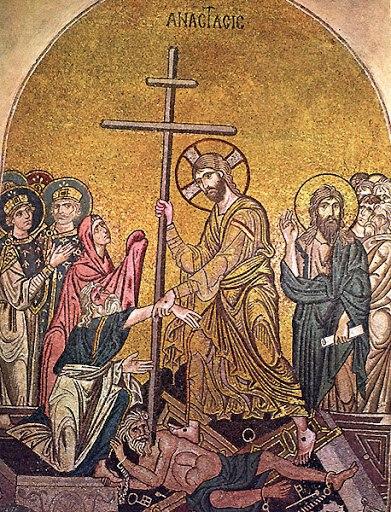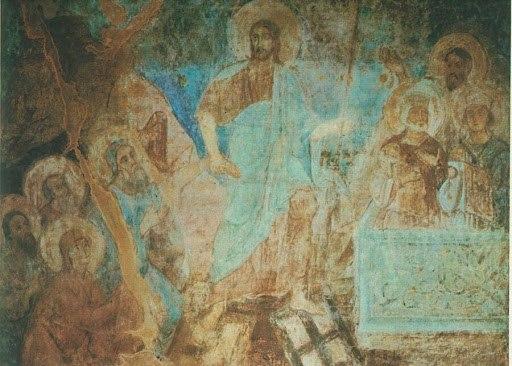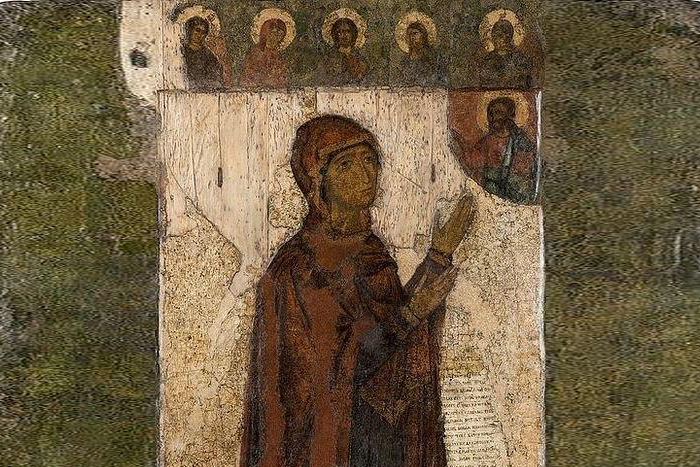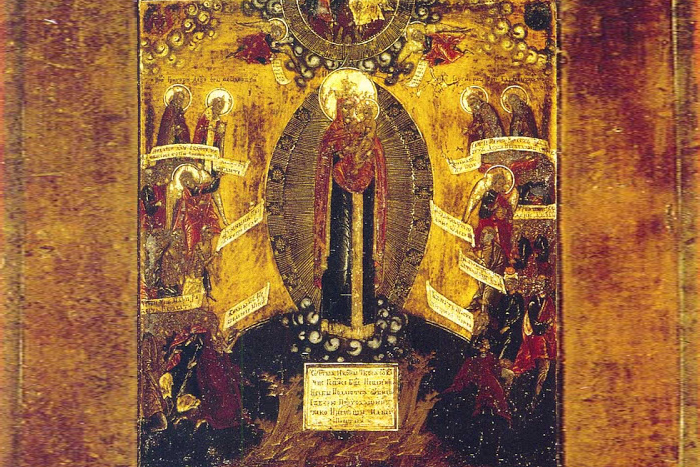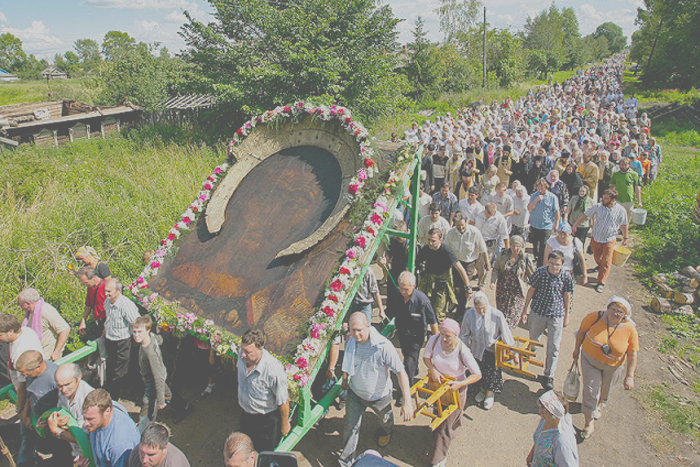
The usual iconography of the Resurrection is actually a scene of the Descent of Jesus Christ into hell, which, according to tradition, took place on the Holy Saturday. This iconography is based on the text of the apocryphal Gospel of Nicodemus. According to this apocryphal text, after His death, Christ descends into hell, breaks its gates, and brings out Adam and other forefathers, prophets and righteous people of the Old Testament who were waiting for Him.
According to researchers, the iconography of the Descent into Hell emerges in the 6th-7th centuries and develops over time, but the early artifacts, apparently, have not survived the era of iconoclasm. The earliest surviving example of the Descent into Hell is a page from Trebizond Gospel (2nd half of the 11th century). This is a well-established image.
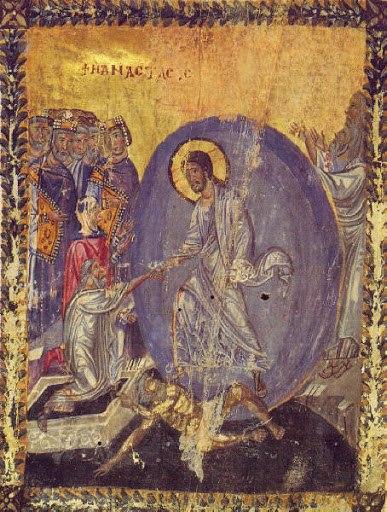
There is Christ depicted in the center of the page against a background of a shining mandorla dressed in light bluish-purple garments, with the figures of the righteous on both sides. He has a figure of personified hell above the black abyss under His feet. Adam and Eve are to the left of the Savior, as if they were in a stone tomb. Adam looks at Jesus with hope. Jesus holds Adam’s hand – this detail is found on all icons. Eve, dressed in red robes and with a white cap on her head, is facing the Savior with a prayerful gesture. There are figures of the Prophets David and Solomon in royal vestments above Eve’s image. On the opposite side of Christ there are figures of prophets in supplication, among them Isaiah and John the Baptist. The caption at the top of the icon reads “Resurrection”.
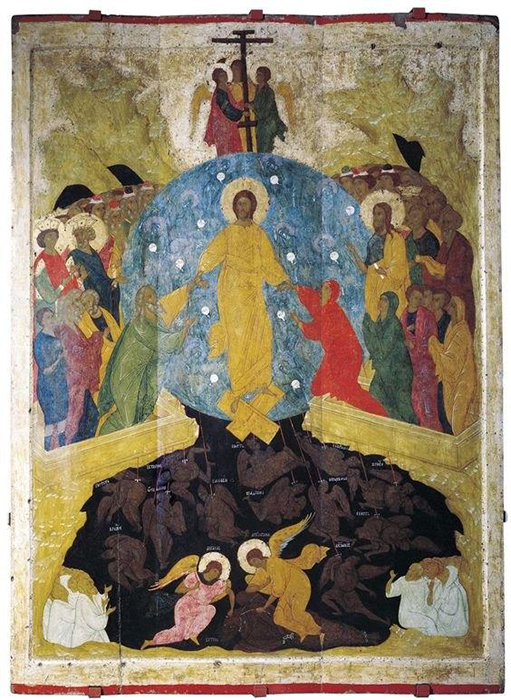
Subsequently, the iconography of the Descent into Hell acquires additional details and changes a little: for example, on later icons Christ stands in the center of the composition, while mountains rise on the left and right sides of the icon. Some icons depict angels lifting up the cross above the mandorla (glory) of Christ. One example is the icon by Dionysius.
After the iconoclastic period, the scene associated with the Resurrection of Christ occupies an important place in church decoration: one of the most famous mosaics on this subject is in the temple of Hosios Loukas in Greece built in the first quarter of the 11th century.

This image has a concise composition, with Christ in the center holding the cross in His arms as a symbol of His torment and the atonement of sins. The abyss of hell and the crushed gates of hell are under his feet. The dynamics of the composition and the position of the figure of Christ indicate that He is coming out of hell.
The scene of the Descent into Hell comes to Russian art in the 11th century: the first such images were frescoes of the Holy Sophia Church in Kiev, as well as frescoes in the Mirozhsky Monastery in Pskov.
One of the most impressive examples of the Descent into Hell are frescoes from the Chora Monastery (14th century), which was erected in the vicinity of Constantinople. This fresco depicts Christ standing on the fallen gates of hell in white bright clothes. It is on this fresco that the white color of the garments is found in this scene for the first time; before that, Christ had mainly been pictured in ocher and bluish garments, which corresponded to Divine Light and to the heaven. The radiance of white garments is a sign of the astonishing heavenly purity of Christ. Both Adam, who stretches out his hand, and Eve, who rises from the tomb, are on either side of the figure of Christ. Christ holds Adam and Eve’s hands, gripping them at the wrists. There are also figures of the forefathers and prophets on the right and left sides. John the Baptist stands on the left and extends his hand toward the Savior, pointing at Him as if to remind of his prophecy.
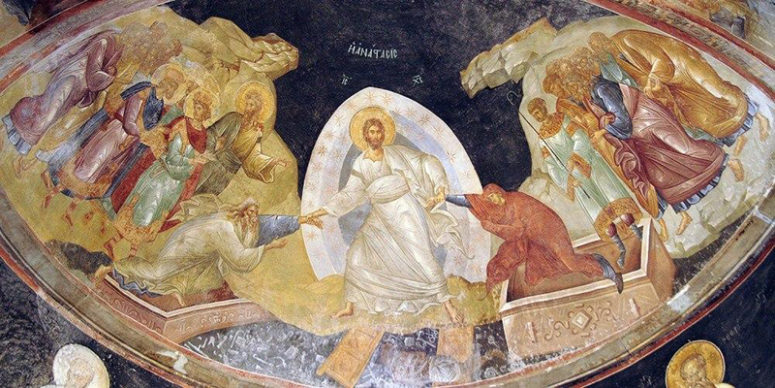
In the 14th century, the scene of Descent to Hell becomes very common. This image takes on an additional meaning in Russian culture, associated with the liturgy. The most interesting of these icons are northern icons. They depict Christ, strange as it may seem, wearing bright red clothes, and according to researchers, this color indicates the Savior’s bloody sacrifice, His martyrdom. The red color is further interpreted as the color of eternal life. This color is also associated with the Divine Fire symbol.
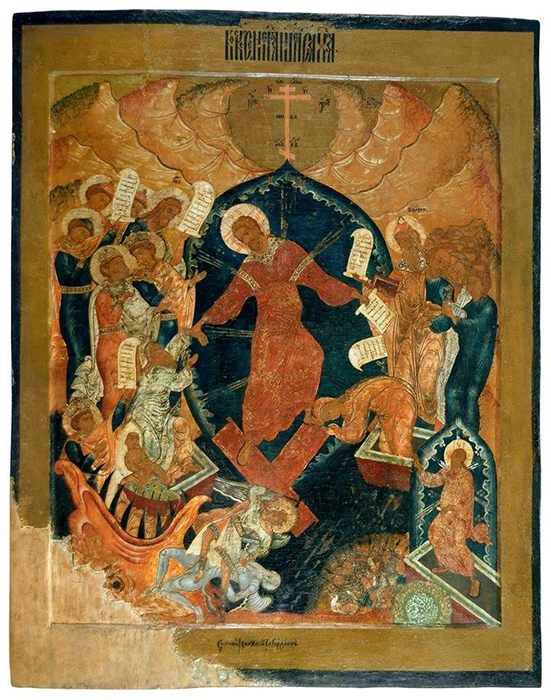
By the end of the 14th century there appeared icons where the Savior is depicted against the background of a blue mandorla, which features ethereal forces that are semi-transparent and symbolize virtues (the icon by Dionysius, for example). This image is associated with the spread of edifying works, such as the Ladder, and their influence on iconography. It is noteworthy that it is not specific saints who rise from the tombs on the icon of Dionysius, but rather nameless souls of the righteous, dressed in white and praying to Christ. Beelzebub and Hell with demons, each of them marked with a name of a mortal sin, are trampled under Christ’s feet. Thus, there is an implicit theme of the Last Judgment here.
As the trend towards more detailed images progresses, the scene of the Descent into Hell gains additional details to illustrate the Gospel of Nicodemus. Take, for example, the late 16th century icon from Yaroslavl. The scene is complicated not only by the detailed depiction of hell, but also by the depiction of the Paradise at the top of the icon, to the gate of which the procession of the righteous is directed.
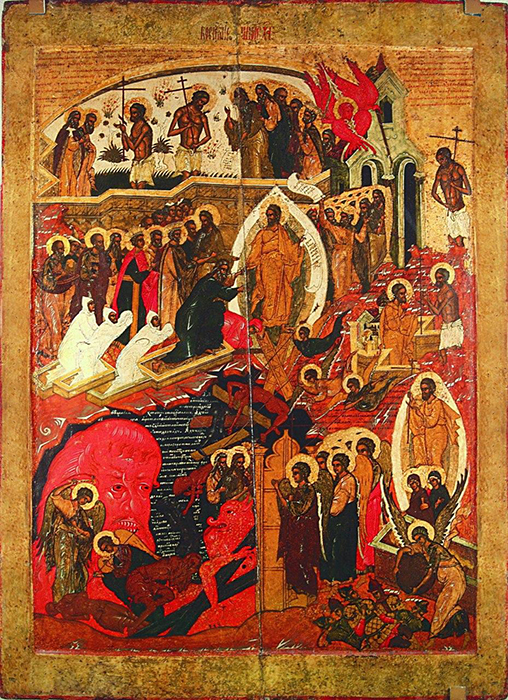
The image of the Savior rising from the tomb around which sleeping soldiers lie appeared in Orthodox icons at a later date, in the late 16th – early 17th centuries. It made its way into Russian culture from the Western tradition. It became widespread, as it is not loaded with a large number of symbols and additional meanings, has a simple plot, which, however, does not quite conform to the tradition.
However, the traditional Easter icon is the Descent of Christ into Hell and the theme of the Myrrh-Bearers and the Angel at the Holy Sepulchre, more commonly used in the frescoes. However, both the ancient Byzantine composition and the newer image of Christ next to the cave tell us about the most important feast – the Resurrection of Christ and the victory of the Savior over death.

